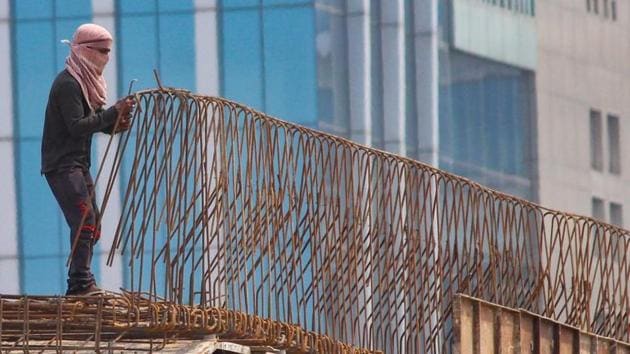What IIP numbers tell us about industrial activity in lockdown
Numbers suggest that the sequential recovery in June was led by pent-up demand due to the Covid-19 lockdown
The Index of Industrial Production (IIP) numbers for June were released on 11 August. We now have the first quarterly (April-June) estimates of a major sector’s activity during the lockdown phase.

The IIP has three components by economic activity: mining and quarrying, manufacturing and electricity. These three sub-sectors had a share of around one-fifth of the total Gross Value Added (GVA) in 2019-20.
An HT analysis suggests that India’s June quarter gross domestic product (GDP) could witness a significant annual contraction due to the headwinds in the sub-sectors covered under the IIP alone. The overall extent of the fall in GDP will be much greater once the losses in the services sector, which account for more than half of the GVA, are factored in.
Given the fact that high-frequency indicators such as the Purchasing Managers’ Index (PMI) for manufacturing and fuel demand in July have fallen from their June levels, and the IIP indices had not recovered to their previous year levels until June, the sequential recovery – last month over previous month – between April and June does not guarantee that an annual contraction in the July-September quarter can be ruled out.
Also read: Factory output shrinks sharply in June to 16.6%
The IIP numbers also suggest that the sequential recovery in June was led by pent-up demand due to the coronavirus disease lockdown, and businesses remain circumspect about a sustainable increase in demand.
The GVA series clubs mining and quarrying, manufacturing and electricity, along with construction, under the industry sector. These three sub-sectors had a share of 22.9% in India’s GVA in 2019-20. To be sure, while IIP has the electricity sub-sector, the GVA series takes electricity, gas, water supply and other utility services together.
As is expected, manufacturing has the highest share among these three sub-sectors: 77.6% in the IIP series and 77.7% in the GVA series. Growth rate of IIP and these three sectors in GVA move in tandem.

The IIP series shows a 36% annual contraction in the June quarter. Assuming a 22% share of the sub-sectors covered in the IIP in GVA, this alone entails a contraction of almost 8% in the GVA.
Given the fact that the service sector has fared much worse, as can be seen from the PMI indices, the actual contraction in GVA will be much bigger. PMI for services was 5.4, 12.6 and 33.7 in April, May and June, respectively. These numbers were 27.4, 30.8 and 47.2 for manufacturing.
A PMI value less than 50 signifies a contraction in economic activity. PMI for industry and services in the month of July was 46 and 34.2.
Services have a share of 55% in the GVA. Even if one excludes public administration, defence and other services; assuming the government has not cut back on spending, it is more than 40%.
While the rate of contraction in IIP has been declining -- it was 18.67% in March, 57.63% in April, 33.9% in May and 16.63% in June -- it does not mean that economic activity has returned to last year’s levels. If the July IIP annual growth has to enter positive territory, the month-on-month growth between June and July will have to be 22.4%.
The IIP numbers also support the theory of pent-up demand due to the lockdown giving a temporary boost to economic activity, which is showing signs of having stagnated.
Businesses remain circumspect about future growth and seem to have postponed investment in a big way.
This can be seen from the fact that the capital goods segment of IIP shows the biggest contraction, while consumer non-durable goods were the only category to show positive annual growth in June.

The fact that important high-frequency indicators such as the composite PMI index, consumer confidence as captured in the Reserve Bank of India’s survey, fuel consumption and so on have turned worse in July compared to earlier levels (June for PMI and fuel consumption and May for consumer confidence) suggests that IIP numbers could also follow suit in July.
Stay informed on Business News, TCS Q4 Results Live along with Gold Rates Today, India News and other related updates on Hindustan Times Website and APPs



